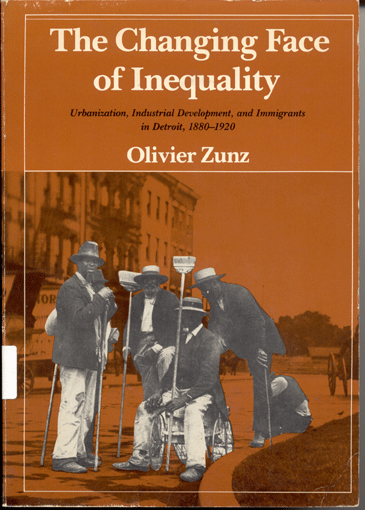The Changing Face of Inequality

The Changing Face of Inequality is the first systematic social history of a major American city undergoing industrialization. Zunz draws a portrait of Detroit's evolution between 1880 and 1920 through an examination of ethnicity, class, differential opportunity structures, the impact of lager industry, the role of business, the situations of migrant blacks, and the control over the use of space within the city. Using data obtained from census reports, neighborhood newspapers, records of real estate transactions, government records, archives of associations, city directories, marriage licenses, and company documents, Zunz delineates the contours of social change in American industrial society.
His research suggests that the social structure of American cities in the late nineteenth century was strikingly different from that of the present day. Detroit was once a conglomerate of semiautonomous ethnic communities, each occupying its own section of the city and comprising a complex social hierarchy. In the crucial forty years that Zunz examines, industrialization profoundly altered the urban scene. Industry came to dominate the whole hierarchy of work, to reorganize the neighborhood's landscape, social life, and cultural affiliations. Detroit's modern class structure arose by default, Zunz argues. Class became the salient feature of urban life, not because the social structure had suddenly rigidified, but because the traditional ethnic matrix for people's lives had been irrevocably weakened. (Excerpt from Back Cover)